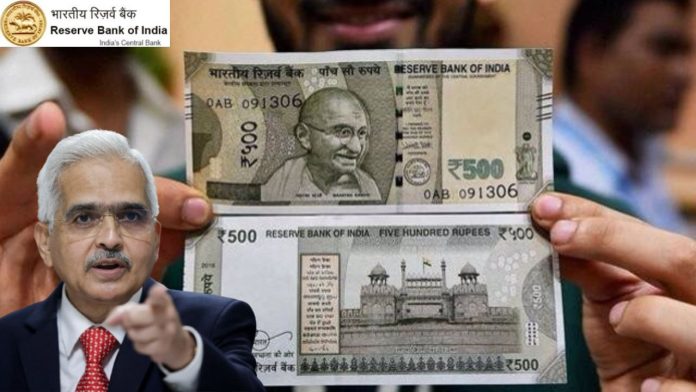Important Update

Important update for those who possess 500 Rupee notes: The Reserve Bank of India has released a new set of guidelines pertaining to the use of these notes. It is highly recommended that you review these guidelines to ensure compliance. Failure to do so may result in consequences.New guidelines have been issued by the Reserve Bank of India regarding the use of 500 Rupee notes. In the event that you possess two 500 Rupee notes with the same serial number, it is important to know what action to take. Additionally, individuals may encounter worn or damaged notes when withdrawing money from an ATM, causing concern. However, it is advised to refer to the RBI guidelines to address such issues and alleviate any related difficulties.
The Reserve Bank of India issues notes in denominations of 100, 200, and 500 Rupees, but since demonetization, there has been an increase in fake news circulating about these notes. If you need to replace old or damaged notes, it can easily be done by contacting your nearest bank branch, where you can exchange your notes and coins. However, concerns may arise if two notes share the same serial number. The Reserve Bank has addressed this issue by stating that while it is possible for multiple banknotes to have the same serial number, they may have different inset letters, printing years, or governors of the Reserve Bank of India. Inset letters are characters printed on the number panel of a banknote, and it’s important to note that some notes may not have any inset letter at all.
The following are the methods to recognize counterfeit currency:
In its guidelines for identifying the new 500 Rupee note, the Reserve Bank of India has addressed recent claims circulating in messages that suggest a fake 500 Rupee note lacks a green strip near the signature of the RBI governor, instead placing it near the picture of Mahatma Gandhi. However, the RBI confirms that both types of notes are valid. To assist the public in distinguishing between genuine and counterfeit 500 Rupee notes, the RBI has also shared a PDF document. Additionally, the Press Information Bureau (PIB) has tweeted this information to clarify the validity of both types of notes.
How to identify unfit notes
- Physical damage: If a note is torn, soiled, or mutilated, it is considered unfit.
- Fading: If the color of the note has faded significantly, it may be considered unfit.
- Missing security features: If a note is missing security features, such as watermarks, security threads, or holograms, it may be deemed unfit.
- Excessive writing: If a note has excessive writing or markings on it, it may be considered unfit.
- Staple or pin holes: If a note has staple or pin holes, it may be deemed unfit.
If you come across any notes that exhibit these signs of being unfit, you should consider exchanging them for new, usable notes at a bank or financial institution.